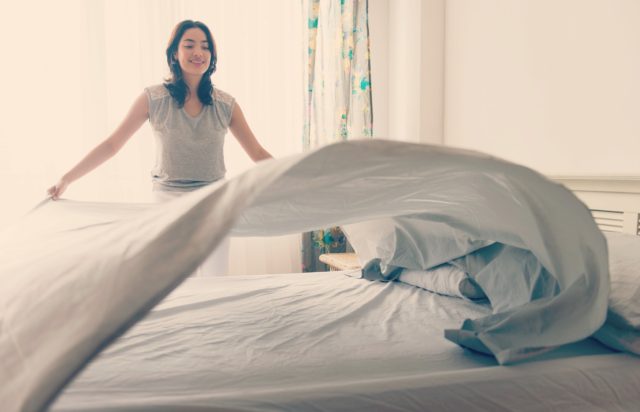Growing up, most of us probably heard our parents tell us time and time again to make our beds each morning, but as it turns out, they could have been wrong.
Research from Kingston University has shown that making your bed in the morning traps in dust mites that have accumulated overnight and provides a breeding ground for allergens that can exacerbate asthma and allergies.
These microscopic bugs feed on scales of human skin, and they thrive in moist environments. When we sleep during the night, our bodies become warm and sweaty, making us a prime target for these dust mites to feed on our skin (and leave behind excretions that can give us asthma-like symptoms).

Making your bed first thing in the morning traps in this moisture, allowing your bed to be a home for up to 1.5 million dust mites. If you leave your bed messy, however, the mites are exposed to air and sunlight, which causes them to become dehydrated and die out.
The Problem With Dust Mites
Because mites can produce allergens that are problematic for people with asthma or allergies, it’s important to minimize the number of mites milling around in your bed.
To search for a solution to the problem, scientists at the university developed a computer model to track the number of dust mites in the home, and they found that leaving your bed unkempt throughout the day is the best solution to reduce the number of dust mites. Letting your bed air out to remove any moisture inhibits mite survival, so you no longer have to feel guilty about heading out the door in a rush with your sheets in a tangle.

If you’re someone who can’t stand a messy bed, at least consider leaving your bed unmade in the morning for a few hours, and putting it together later in the afternoon.
Combatting Dust Allergies
The American College of Asthma, Allergy and Immunology recommends the following to help combat dust allergies at home:
- Remove wall-to-wall carpets, particularly in the bedroom.
- Keep pets out of the bedroom, and preferably out of the house.
- Minimize household humidity.
- Use “mite-proof” cases on mattresses and pillows; wash bed linens frequently in hot water.
- Install a high-efficiency media filter in your furnace and air conditioning unit.
Keeping your house cool and dry can also help reduce dust mites, as they thrive best in a warm and humid environment.

Other Benefits Of Keeping Your House Cool
Besides combatting mites, keeping your home cool (between 60-67 degrees seems to be the ideal) while you sleep has been shown to provide a number of other health benefits,including:
1. Decreasing Your Risk For Metabolic Diseases
In a 4-month study, it was determined that sleeping in a 66-degree room not only burned more calories while awake, but the amount of “brown fat” (or good fat) in the body increased. Brown fat allows your body to burn calories, not store them. Together, this could help lower the risk for metabolic diseases like diabetes over time.







